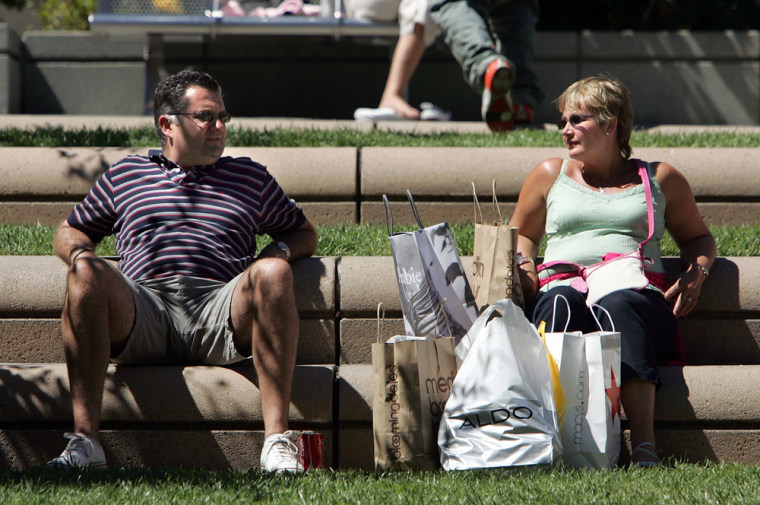Individuals took a shopping break in June, boosting their spending at the slowest pace in nine months as high gasoline prices and fallout from the housing slump made people think twice about buying.
The Commerce Department reported Tuesday that consumer spending edged up by just 0.1 percent. That marked a pullback from May’s brisk 0.6 percent rise and was the smallest increase since last September. Incomes, the fuel for future spending, rose by 0.4 percent in June for the second month in a row.
The spending and income figures aren’t adjusted for inflation. The consumer spending figure matched economists’ expectation, while income growth was just shy of analysts’ forecasts for a 0.5 percent increase.
Consumer spending plays a major role in shaping overall economic activity. In the first three months of this year, it was consumers’ brisk spending that prevented the economy from stalling. However, in the April-to-June quarter, consumers were much more subdued. They boosted spending at a pace of just 1.3 percent, the slowest since the final quarter of 2005, the government reported last week.
Even so, the national economy managed to stage a rebound, growing at a solid 3.4 percent pace in the second quarter, thanks to a revival in business investment, stronger sales of U.S. exports overseas and increased government spending. The housing slump continued to be a drag on the economy but not as much as it has been in previous quarters.
An inflation measured tied to the income and spending report showed “core” prices — excluding food and energy — moderated slightly. These prices rose 1.9 percent over the 12 months ending in June. That was a small improvement from the 2 percent annual gain for May.
Against this backdrop, Federal Reserve Chairman Ben Bernanke and his central bank colleagues are expected to hold a key interest rate steady at 5.25 percent when they meet next week. This important rate has stayed at that level for more than a year. Before that, the Fed had pushed up rates for two years to fend off inflation.
In June, consumers cut back spending on big ticket goods such as cars and appliances. Such spending dropped by 1.6 percent, reversing an increase of the same size in May. Spending on nondurable goods, such as food and clothes, was flat in June, compared with a big, 1.4 percent rise in the prior month. Spending on services, however, rose by 0.5 percent in June, up form a 0.1 percent increase in May.
High gasoline prices have left people with less money to spend on other things. The housing slump and weaker home prices have made people feel less wealthy and thus less inclined to spend as lavishly as they had during the five-year housing boom.
With income growth outpacing spending, Americans’ personal savings rate — savings as a percentage of after-tax income — improved.
The savings rate rose to 0.6 percent in June, up from 0.4 percent in May. Even with the better showing on this measure, economists caution that the picture of savings isn’t quite complete. The savings rate doesn’t capture gains from such things as real estate or financial investments.
As part of annual revisions, which are based on more complete data, the savings rate turned out to be higher in 2004, 2005 and 2006 than the government previously thought.
The savings rate was revised up to 2.1 percent from 2 percent for 2004. It was boosted to a positive 0.5 percent from negative 0.4 percent for 2005. And, it was moved up to a positive 0.4 percent from a negative 1 percent last year.
